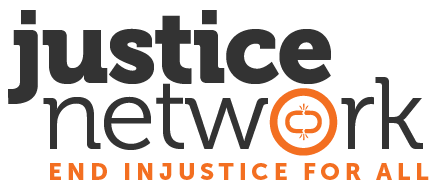A seedy looking man with a rough, scruffy face and dim, squinted eyes walks past you on the sidewalk. His closed arms and shabby clothing alert you of potential danger. For many, this is the image that comes to mind when they wonder what a human trafficker would look like. They envision a man like this taking a young girl off of the street and shoving her into the back of a windowless van. While this is a possibility, it does not accurately depict the true nature of human trafficking. Forced abduction is actually the least used method in Human Trafficking. The truth is that anyone could be a human trafficker. There is no “typical” trafficker. A trafficker can be any gender, age, race or ethnicity. They can live in any area and be of any social status. What they do have in common is how they manipulate and control victims to trap them in the world of human trafficking.
The 5 Disguises
Traffickers will wear a mask in order to gain access to and the trust of a target victim. CNN correspondent Brad Riley describes these disguises in this video.
The Pretender: A trafficker often pretends to be a loving figure in the victim’s life, such as a boyfriend, big sister, or even a father. This is the most commonly used method.
The Provider: A trafficker may target a person who is vulnerable because they lack material comforts. In this case, the trafficker takes on the role of “provider” to the victim by offering them necessities like clothing, food, or a place to live. They may also offer nice gifts and luxury items that the victim wants.
The Promiser: A trafficker may lure a victim in by promising to give them a job, a lavish lifestyle, or the opportunity to travel. A victim may meet a trafficker or agree to go away with a trafficker based on these promises.
The Protector: A trafficker may also lure in a victim by using physical power or intimidation to protect the individual from another threat. The victim accepts these actions as help, only to later have these same tactics used against them as a means of control.
The Punisher: A trafficker uses violence and threats as a means to control and to continue to maintain control over the victim. Eventually all of the disguises lead to this one and it is the driving force behind the victim’s inability or unwillingness to escape their situation.
Know the Signs
There are many red flags that can indicate human trafficking or modern enslavement is occurring. The most common sign is that something just “feels off” with a person, couple, or group of people. A victim of human trafficking may also exhibit the following:
- Is fearful, anxious, depressed, submissive, tense, nervous, or paranoid
- Avoids eye contact
- Has no access to healthcare (comes up if they are sick or hurt)
- Appears malnourished
- Shows signs of physical or sexual abuse or signs of being restrained or tortured
- Has few or no personal possessions
- Has no control of finances or access to their ID or passport
- Claims to be visiting, but has no knowledge of where they are staying
- Lack of knowledge of whereabouts or a lost sense of time
- Has numerous inconsistencies in their story
- If a third party is present, they are not allowed to speak or the third party always answers for them
What You Can Do
If you suspect that someone may be a victim of human trafficking call a help line immediately. The National Human Trafficking Hotline is 1-888-373-7888. Text INFO or HELP to BeFree (233733).
Remember, human trafficking is the fastest growing crime in the United States and in the world. By understanding the issue and recognizing the signs you can help make a difference.

Thank you! This is an excellent. May we have permission to translate into Bulgarian and use your descriptions?
Hope, joy and peace,
Beth Stanton
The Daughters of Bulgaria Foundation
http://www.daughtersofbulgaria.org
Hi Beth, I’m sorry for the delay in responding. I just saw your comment today. We would be honored if you translated into Bulgarian and look forward to continuing to support the work of Daughters of Bulgaria.
Susan